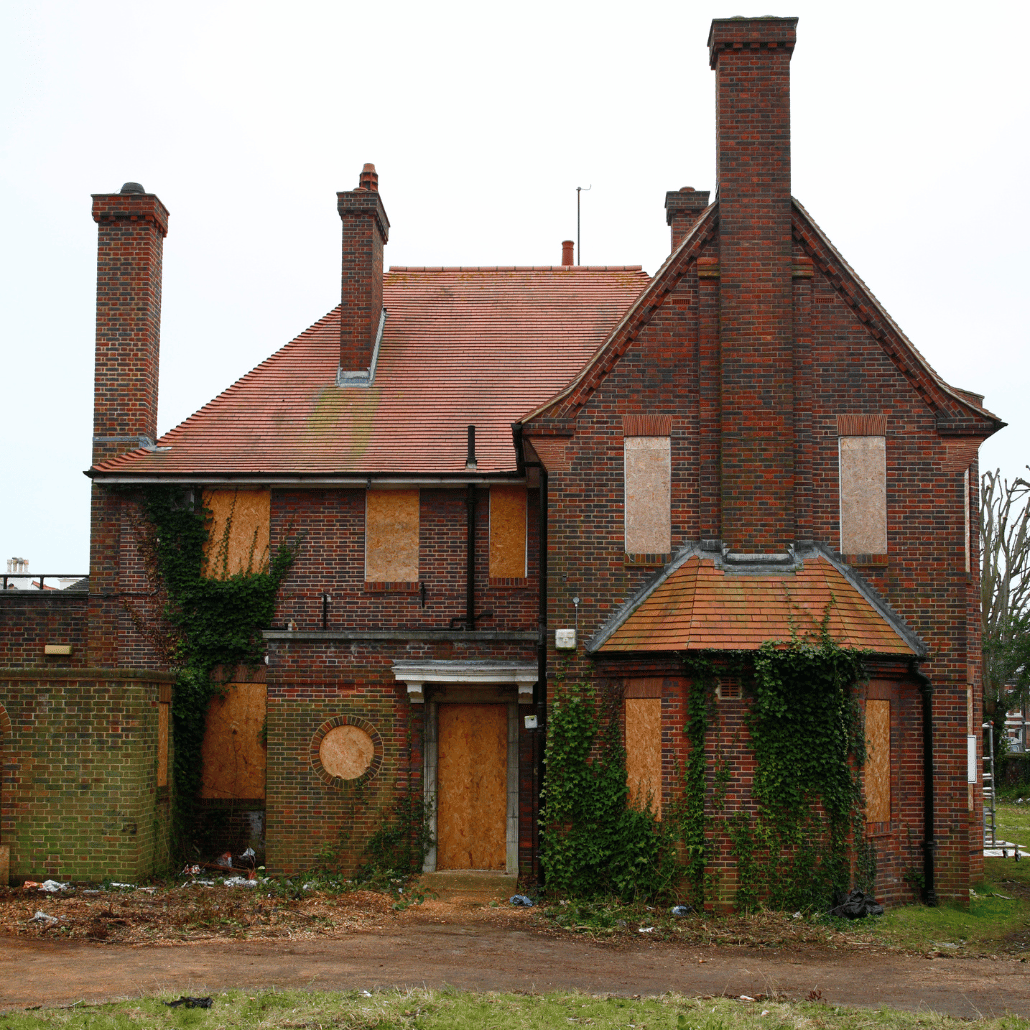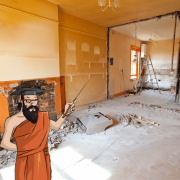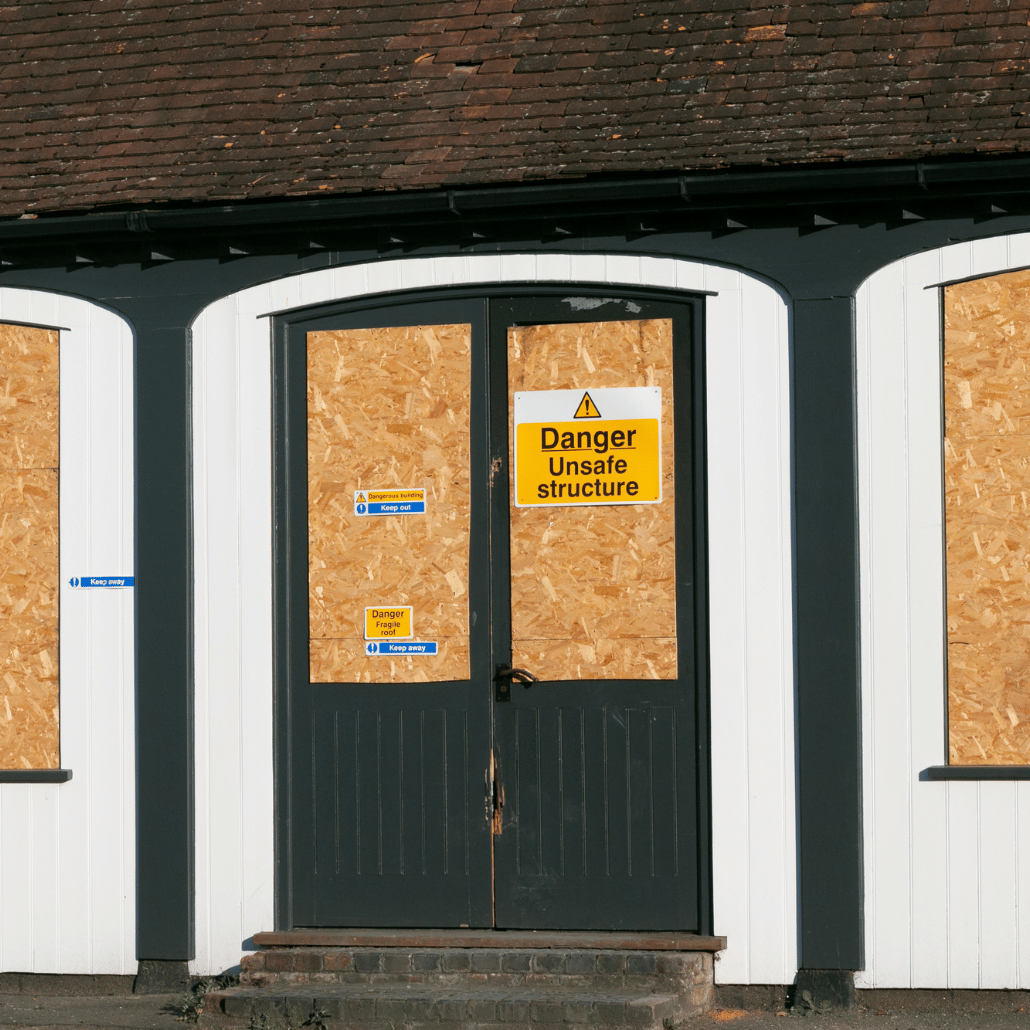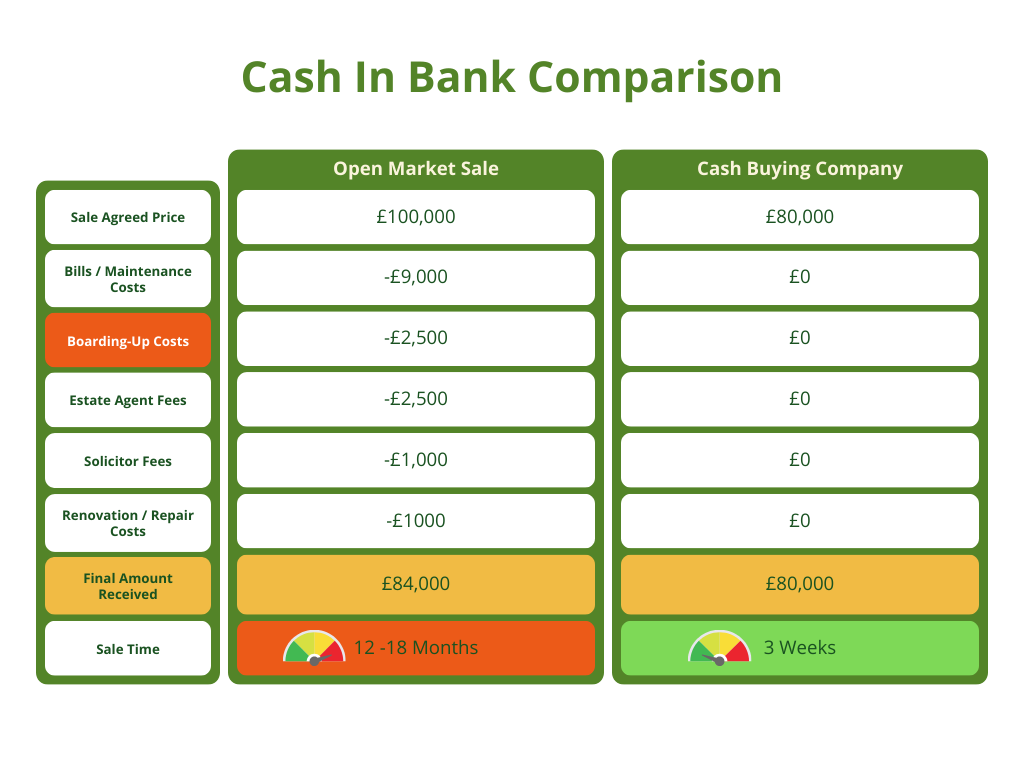Options for boarding up vacant property
If you decide that boarding up your house is necessary the next thing you will need to decide is what type of boarding to use. This will be somewhat dependent on circumstances but factors such as cost and longevity will also play a part.
When it comes to boarding up a residential house there are 3 main options.
Timber Boarding
Probably the image that springs to mind when you think of a boarded up house is one where the windows and doors are covered by big boards of wood. Timber boards, traditionally made of plywood are the cheapest and easiest to fit method but they do come with certain drawbacks.
Often the fittings for wooden boards are fixed directly into the existing window or door frame, which unavoidably causes damage. They are also prone to weathering meaning that they can warp, delaminate and get weaker over time and mean that the property is still vulnerable to damp. Wood is also a combustible material meaning that if vandals wanted to carry out an arson attack on the building setting fire to the boards would be a good place to start. Timber boards also don’t provide a high level of security, anyone with a handheld power tool or even someone with a crowbar and some determination could still access the property without much effort.
Timber boards are a good solution if a property needs to be boarded up quickly and cheaply for a short period of time but they do not provide good protection in the long term.
Steel Sheeting
Steel sheeting offers a step up from Timber boards, it is around 10 – 15% more expensive but provides fire protection and will last much longer than wood. Steel sheets can range in thickness from thin sheets of around 0.5 mm all the way up to super thick sheets at around 50 mm. For most purposes a thickness of somewhere between 1 – 2 mm is the norm as it offers an adequate level of protection and keeps the costs low relative to much thicker steel.
There are some other things to consider beyond thickness, if the property requires light for inspection purposes then you will want to consider perforated steel as this will allow outside light to enter the property. Of course this will leave the property open to the elements if the windows are damaged or non-existent. Another thing to consider is the fixings used, some companies just use standard hex-bolts which can be removed by anyone with an off the shelf spanner and a spare five minutes. You want to make sure that you use anti-tamper security fixings to prevent easy access. It is also important that the sheets are cut to size so that they fit securely over the openings, any gaps between the sheets and the wall will leave an opening for a crafty crowbar wielding loon to exploit.
Security Screens
The most expensive and secure method of boarding up an empty property is with security screens such as SITEX. This method secures the screen to the opening using cables and steel brackets to create a very strong seal and unlike the other methods they are secured from the inside. As such security screens offer robust long lasting protection, they are arson resistant and can be perforated to let in natural light for inspection. Security screens are a heavy duty method more suited to commercial use but can be used for residential purposes. Besides the extra cost one of the drawbacks is that the fitting will likely require the windows to be removed completely which then requires them to be refitted or fully replaced once the boarding is no longer required.






 Cash House Buyer Guru
Cash House Buyer Guru